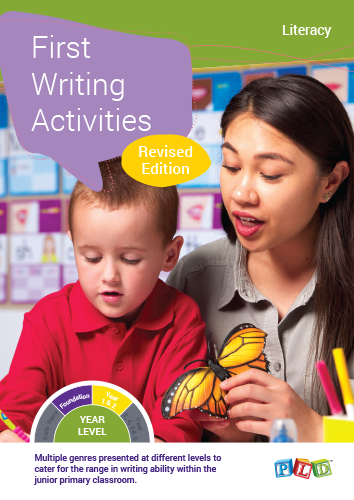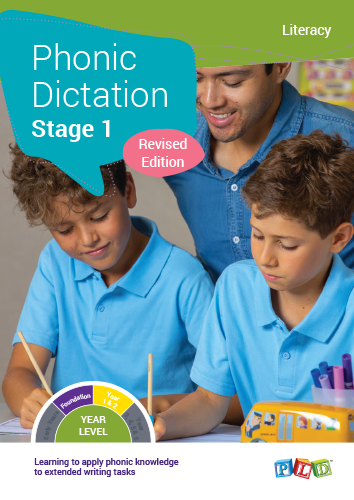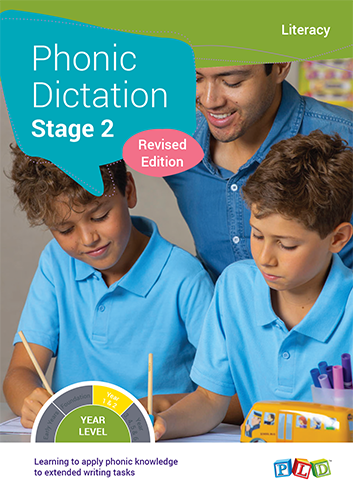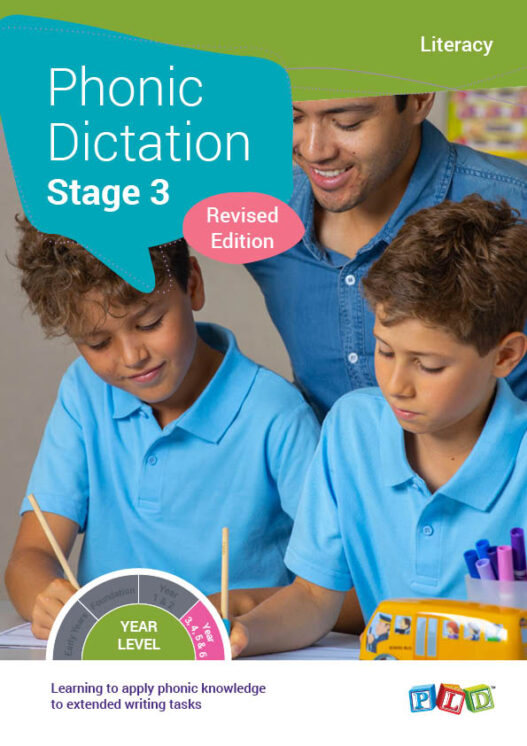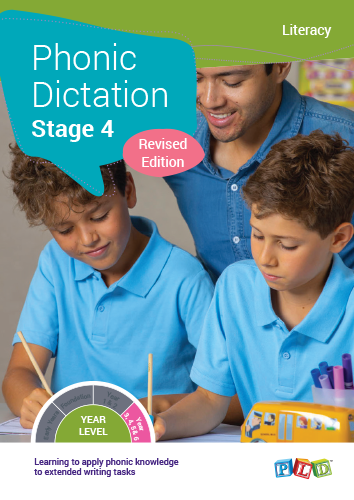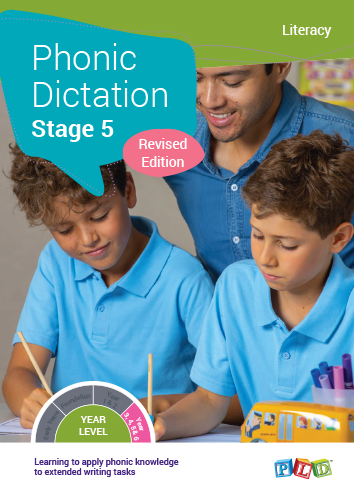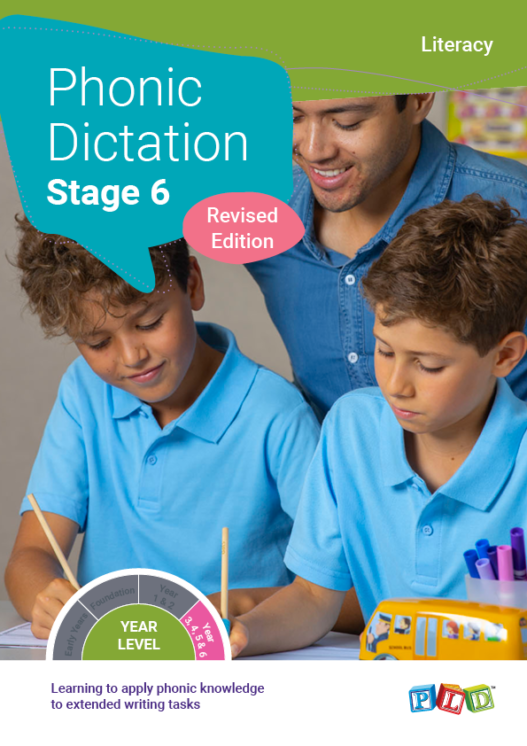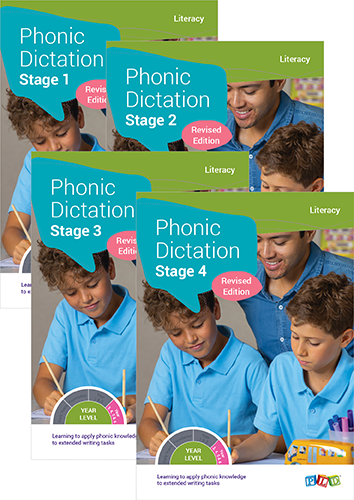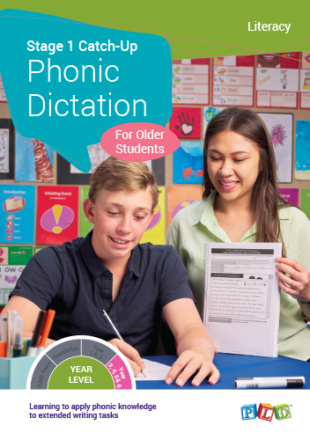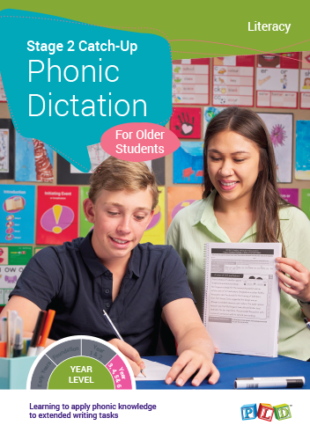The ultimate goal for any teacher is to enable their students to express themselves through authentic writing. However, achieving this level of literacy independence requires a solid foundation in reading and writing skills. Phonic dictation is an essential component in this process.
Dictation serves as a bridge to independent writing whereby students are able to practise the mechanics of writing while applying taught phonic concepts in sentences without the additional cognitive load associated with self-generated writing.
Dictation is a key component of PLD’s approach, providing teachers with easily accessible decodable texts that offer students written material aligned with PLD’s phonic scope and sequence. This method ensures students feel successful and build confidence in their writing capabilities, as the passages only incorporate the phoneme-grapheme correspondences and common irregular high-frequency words they have learned in class.
How Phonic Dictation Supports the Development of Key Writing Skills
PLD’s word lists aim to teach students the phoneme-grapheme correspondences or morphological components required to read and spell words with the same spelling patterns. However, students also need opportunities to practise these spelling patterns in sentences to achieve the automaticity required to generalise spelling knowledge into self-generated texts. Researchers such as Rosenshine (2012) suggest that to gain automaticity in a new skill, it should be rehearsed past the point of initial mastery. This concept of over-learning ensures that the material can be recalled automatically without impacting heavily on their working memory. As students learn to apply the phonic knowledge learned in class within dictated sentences, they are able to redirect more of their attention toward comprehension and meaning in authentic texts.

Research has also demonstrated how important dictation activities are for sentence writing with Year 2 students from NSW who received explicit instruction in spelling and punctuation followed by sentence dictation did significantly better than comparison students who did not engage in dictation (Robinson-Kooi & Hammond, 2020).
How to Complete PLD’s Phonic Dictation with Fidelity
PLD’s dictation is designed to develop students’ listening skills, orthographic and morphographic knowledge, handwriting, and punctuation skills. However, to fully realise these benefits, dictation needs to be completed with fidelity. Review the checklist below to determine whether you are implementing PLD’s phonic dictation with fidelity.
PREPARE
Present Readings of the Text Prior to Dictation:
Prior exposure to the text allows students to be familiar with the main idea and types of words that will be presented, freeing up valuable cognitive space for accurate spelling and punctuation.
- Teaching Tip: Repeated reading practice can be facilitated through partner reading or reading with another adult such as a parent for homework. The passage could also be incorporated into your PowerPoint to ensure students have been sufficiently exposed to the text prior to the dictation exercise.
Inforce Crowd Control:
Dictation requires students’ undivided attention. Other students speaking or interrupting during dictation time will inevitably lead to poorer results.
- Teaching Tip: Set a timer of 10-15 minutes to visually demonstrate how long students are expected to engage in the task. Adhering to the time limit will ensure the activity does not drag on and bleed into valuable teaching time.
- Teaching Tip: Explicitly teach and model the behaviours required before beginning the dictation lesson. Show what a good listener looks like, e.g., pencils down, looking towards the front, repeating the sentence aloud, picking up the pencil, saying the sounds or syllables quietly as they write as many words as possible, not calling out if they forget a word, and waiting until the next sentence is presented.
Use an Exercise Book:
PLD recommends utilising a lined book over mini whiteboards for dictation as it provides teachers and students with the ability to track progress over the school year.
- Teaching Tip: Consider the way you present the dictation activity. Changing the number of words given at a time, the tone or intonation you use, and the use of gestural or verbal prompts will change the difficulty of the task.
LISTEN & SAY IT:
Teach the Listen and Say It Routine:
Repeat the segment of text twice before asking students to say it while you verbalise the sentence, then students say the sentence by themselves. You can teach students the importance of repeating the teacher through the phrase: “If you can’t say it you can’t write it!”
- Teaching Tip: Fists in the air and counting the words can be a useful prompt if students are missing words while they are repeating or writing the sentence. Ask them to count the words with their fingers as they repeat the sentence.
WRITE IT:
Leave a Sufficient Amount of Time to Write:
This is usually about 20-30 seconds but it may be helpful to watch for the majority of students to see when they have put their pencils down and are ready for the next part.
EDIT IT:
Read Back Through the Sentences Used for Dictation:
Some classes will only get through a couple of sentences before the timer runs out (this is okay! Shorter, more frequent sessions are recommended over one long dictation session). If you are editing the passage together as a class you might like to ask students to check for different things on each reread of a sentence. For example, the first time could be for missing words, the second for accurate punctuation, and the final read could be for spelling errors.
- Teaching Tip: Ask students to count how many words they wrote down. Students can aim to beat their scores on the following presentation of the dictation passage.
Provide Time for Students to Edit Their Own Work:
You can choose for students to complete this independently by placing the correct passage on the projector or work through sentences together as a class.
- Teaching Tip: Employing a ‘tick it or fix it’ routine can help students pay close attention to each word in the text to pick up on errors and practise rewriting misspelled words again.
REVIEW PROGRESS:
Review Student Spelling Progress Through Dictation:
A teacher can easily analyse a dictation text to understand whether the student is generalising their word-level spelling abilities to the sentence level. This can be helpful if you are unsure whether the student needs more practise consolidating previously taught phonic concepts.
Set Attainable Goals For Students:
After reviewing the students’ work you may notice some students may require goals other than writing the passage correctly. Having small and achievable goals can be particularly useful for struggling writers. PLD’s Phonic Dictation books have sample rubrics for teachers to utilise such as listening well and not asking for words to be repeated, writing in the lines, and including spaces between words.
For additional information on how to present dictation please read this FAQ and this FAQ.
What Dictation Passage Should Be Presented?

When completing dictation as a whole class it is suggested that you refer to your PLD tracking spreadsheet to look for student overlap. In the example below even though some students are working on Stage 3 and 4 or Stage 4 and 5 there is a large overlap of students working in Stage 4.
Therefore, Stage 4 dictation will work well for this class. Not all classes will have a large overlap like this, in those circumstances using the PLD Stage texts suitable for the middle group or alternating the dictation passages between the middle and top group each week will ensure most students are able to engage in the exercise. For students who are significantly behind it is recommended that they are presented with a dictation passage which matches their current ability either with a support teacher or teacher aide or with the classroom teacher while the rest of the class completes an independent activity (e.g., while they are editing their dictation passage). In the previous example, Stage 1 Target 4 Phonic Dictation passages would be appropriate for this group of students.
How Often Should Dictation Be Presented?
PLD recommends the following frequency of dictation. However, shorter, more frequent sessions will produce stronger results.

Other Ways to Present Dictation
Small Group Dictation
Presenting dictation within a smaller group that matches the phonic concepts they have been working on allows for more targeted sentence-level practice, ultimately leading to faster improvements. Facilitating this in the classroom may be achieved through four groups, one with the teacher and one with the teacher aide, the other two groups independently editing the dictation passage. After 15 minutes they swap so all groups have a turn at both editing and completing dictation with an adult.
Utilising Technology for Dictation
Technology is another way to facilitate small group dictation. Utilising an iPad, record yourself speaking parts of the dictation, ensuring you tell students when to pause the recording and write.
For example, “My father asked me, My father asked me, My father asked me…press pause and write that down. My father asked me to water the garden, to water the garden, to water the garden…pause the recording and write that down. My father asked me to water the garden next door full stop, next door full stop, next door full stop…pause the recording and write that down”.
Utilising Other Students for Dictation
Asking a student to become the teacher is another way to facilitate small group dictation. Once students become more confident readers such as in Year 3 and above one student can be nominated to read the text to the other students in the group while the others write.
Alternative Ways to Use Dictation
Additional fun ways to mix up dictation exercises for older students is through ‘messenger dictation’. Make copies of the dictation passage and stick them to a notice board or wall in the classroom (further enough away so students cannot read them from their desks). Divide the students into groups and ask each group to nominate a messenger. The task of the messenger is to go up to the text, read a chunk, memorise a part of the sentence so that they can repeat it to the other students and write it down. They repeat this process until the timer has finished or the passage has been completed. Turning this into a timed activity to see which group can get the most words down is a fun and competitive way for students to engage in dictation activities.
PLD’s Phonic Dictation Offerings
What to Do If Students Aren’t Getting It or Not Engaging?
Dictation within an SSP program is non-negotiable due to its many benefits for students’ spelling and written composition skills. If students are struggling to engage in the above forms of dictation you may need to tweak your presentation of the dictation activity.
Option 1: Present smaller dictation passages for students who are easily overwhelmed by text. Having a near end in sight can serve to motivate students who may shut down after viewing large texts. The revised version of Phonic Dictation books have shorter passage options for this purpose.
Option 2: Present one sentence from a dictation passage during the daily review. This will enable short but frequent sentence level practice of the taught phonic concepts.
Option 3: Provide additional scaffolding such as lines on the page to display how many words or sounds are required.
Further Information and Professional Development
PLD offers an online course that provides more information on how to use PLD’s Phonic Dictation. Raising Writing Standards.
Reference List:
Robinson-Kooi, S., & Hammond, L. S. (2020). Using sentence dictation to practise and assess taught spelling and punctuation skills: a Year 2 Explicit Instruction intervention. Australian Journal of Learning Difficulties, 25(1), 83-108.
Rosenshine, B. (2012). Principles of instruction. Research-based strategies that all teachers should know. American Educator, 26(1).



 print
print